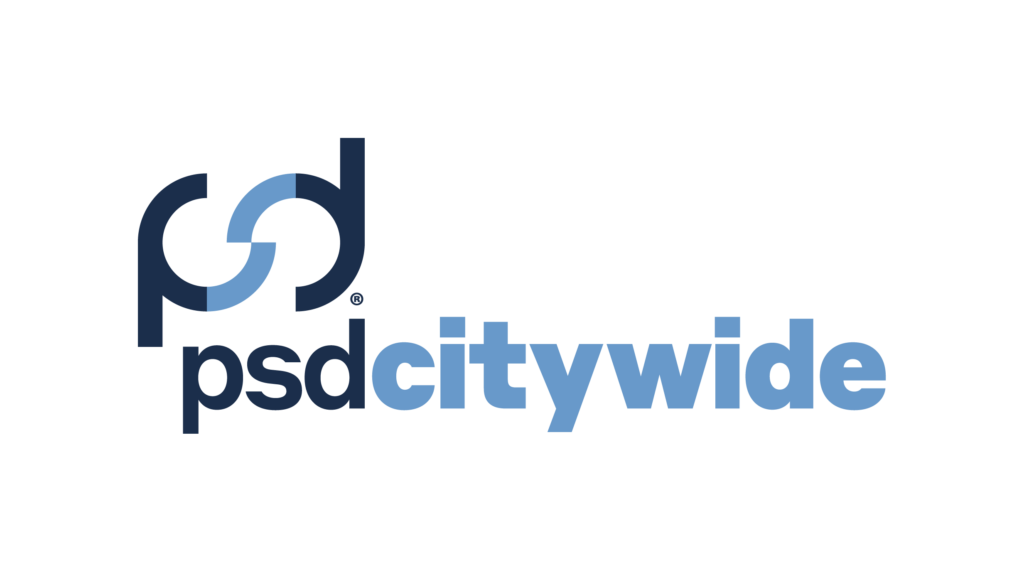Up until now, the efforts of local government practitioners and researchers to promote financial sustainability for municipalities have tended to emphasize technical measures, such as longer-term forecasting, better financial management policies, and strategic budgeting methods. Certainly, these are important, but a body of Nobel Prize-winning economic research called “common pool resource theory” posits that sustainable decision-making systems comprise an interrelated system of leadership strategies and institutional designs. In this article, we will describe how the Government Finance Officers Association (GFOA) has translated common pool resource theory into a practical set of tools and techniques for local government. We will illustrate the concept of financial sustainability for municipalities, with the experiences of San Bernardino County, California.
I. Tragedy of the Commons. .. and the Tragedy of Local Government?
The Tragedy of the Commons is an apocryphal story of a grazing land that is commonly owned by all of the surrounding farmers. Because each farmer has an ownership stake in the grazing area, they have an incentive to send their animals onto the grazing land as much as possible. This is because even if one farmer abstains from using the grazing land, the other farmers will still continue to send their own animals. Hence, every farmer uses the grazing land as much as possible in order to get their “fair share”. The result is that the land is eventually overgrazed and becomes unusable.
A local government’s budget shares important traits with the Commons. Community groups, staff, and other stakeholders all have a claim on the local government budget. Like the farmers, they have an incentive to draw as much as possible from the budget, because if one stakeholder doesn’t draw from the budget, another will. The end result is similar to the grazing land – the public budget is reduced to a point where it can no longer support important services.
Common pool resource theory has identified the elements of a governance system that produces sustainable decisions over commonly owned natural resources. Under the premise that the public budget is also a commonly owned resource, the Government Finance Officers Association has translated common pool resource theory into six “Leadership Strategies” and eight “Institutional Design Principles.”
Local government leaders cannot order people to behave in a sustainable way. Instead, they must inspire pride, loyalty, and enthusiasm so followers will want to help make the organization financially sustainable. The six Leadership Strategies do just that.
- Create open communication among all participants. If financial decision-making pits one group against another, this dynamic sets the stage for one group to view others as adversaries. Hence, it is important to find ways for participants in financial decision-making to work together towards a common goal. Open, especially face-to-face, communication is critical for people to realize their common interests and reach sustainable outcomes.
- Help participants build trustworthy reputations. Trust is essential if people are going to risk suffering a loss to their individual well-being in order to advance the group’s well-being. However, people often have an inflated sense of their own trustworthiness in the eyes of others. Therefore, local government leaders must help create trust. They can do this by modeling behaviors that increase trust (e.g., be dependable, honest) or creating opportunities for different parties to work together for mutual benefit.
- Convince participants that collective efforts yield important benefits. If people see that they can gain from cooperation, they are more likely to engage in it. The gains do not necessarily have to be financial, but could encompass intrinsic benefits – like achieving an important goal. Leaders need to set forth an inspiring vision and show participants the greater purpose they can contribute to and benefit from.
- Ensure that key stakeholders remain engaged. People must remain constructive participants in decision-making for the system to last. Leaders can use meeting and communication formats that invite participation. They also can demonstrate their personal commitment to making stakeholders part of decision-making. However, even when leaders do their best, they will sometimes encounter situations that strain the cohesion of participants. Leaders can build the loyalty of participants so that they will stick with the group to make it through hard times. For example, leaders can model collective commitment by giving up something that they, themselves, value for the good of the group.
- Build long-time horizons into fiscal planning. Short-term perspectives produce short-term decisions. Local government leaders can develop mechanisms that measure the longer-term impact of budget decisions. A leading example is long-term forecasting. However, because local governments appropriate funds annually, there is a natural bias towards the short-term. Consequently, local government leaders must also acknowledge short-term pressures and find ways to prevent short-term considerations from overpowering long-term ones.
- Maintain capabilities to reinforce cooperative behavior. Noticeable successes of a few non-cooperators may convince others not to cooperate as well, while notable successes of those that do cooperate may have the opposite effect. One of the best ways to ensure cooperation is for the participants in the decision-making system to reinforce the importance of cooperating. For example, people generally prefer to be seen as good members of the group. If leaders can show that most members of the group exhibit sustainable behaviors, then other members of the group will be encouraged to do the same.
Institutional design principles are the rules of the game for how local government and other related organizations work together for a sustainable financial future. Institutional design principles provide the context in which the leadership strategies operate. There are eight institutional design principles.
- Well-defined boundaries. Well-defined boundaries encourage people to take into account the impact of their actions on one another. An example of a “boundary” in financial decision-making, which is a temporal boundary – typically, a single fiscal year is the boundary in which decisions are considered. A sustainable institution considers the impact of decisions beyond just one year. Other boundaries might concern the amount of financial reserves the government will hold or the amount of debt it will take on.
- Proportional equivalence between benefits and costs. When constituents can appreciate the value they receive for their taxes and fees, they will be more willing to financially support government. For example, San Bernardino County, located in Southern California, covers one of the largest geographic areas of any county in the United States. In much of the County, snowfall is not a concern. However, in mountainous parts of the County snowfall is a concern. In some of these areas, residents want more frequent snow removal, so San Bernardino County establishes special taxing districts in those areas to pay for the cost of more frequent snow removal. Hence, there is direct connection established between what taxpayers pay and what they get.
- Collective choice arrangements. When people participate in making and modifying plans, the plans will be more likely to fit the circumstances and be perceived as legitimate. To engage stakeholders successfully in a planning process, a government must have institutional capacity for effective virtual and in-person engagement, for representative engagement, and to make engagement a regular part of decision-making.
- Monitoring. Effective monitoring discourages people from breaking the rules. Local governments should develop their own capacity for creating regularly available and credible information about local government financial performance.
- Graduated sanctions and credible rewards. Sanctions deter participants from breaking the rules. Rewards can be given to those who contribute to sustainable resource use. Subtle approaches to encourage sustainable behavior can be effective. For example, benchmarking information or commonly accepted “best practices” can be used to demonstrate that financially sustainable decisions are widely practiced by other governments. This makes it easier for decision-makers inside of the government to make similar choices.
- Conflict-resolution mechanisms. Decisions regarding a government’s fiscal resources are subject to dispute. The best way to resolve destructive conflict is to prevent it from happening. Research shows that if participants in a decision-making process believe that the process was fair, they are more likely to support the decision, even if the decision is not in their own interest. However, sometimes disagreements will run deeper and be so intractable that conflict is unavoidable. In these cases, having structured mechanisms to help parties resolve disagreements constructively can help the organization move forward.
- Minimal recognition of rights. Local governments need to preserve enough independence from state and federal governments to make choices that best fit local conditions. This requires negotiating mandates and managing grant funding carefully.
- Networked enterprises. Local government often can’t solve complex community challenges by itself. It must join with others to form a network of enterprises committed to addressing the challenges for a sustainable cost.
II. Financial Sustainability for Municipalities: San Bernadino County
Located in Southern California, the County of San Bernardino has a population of over 2 million. It has a five-member board of supervisors elected by district. Historically, supervisors focused on protecting the financial interests of their respective districts, and were reluctant to work together in setting priorities across districts. Policy and political fragmentation combined with financial turmoil and operational dysfunction resulted in the perfect storm when the Great Recession hit in 2008. The county faced a structural deficit due to its failure to account for full costs of capital projects and benefit agreements with county employees. In addition, the county lacked processes for making budgetary decisions across departments and for coordinating across governments besides the county. Given steep reductions in revenues triggered by the Great Recession, the county was facing the prospect of bankruptcy.
Fortunately, new elected and administrative leaders, including a seasoned CEO, were willing to tackle these challenges. The county created a centralized structure that allowed for tracking financial decisions across departments. Under this system, each department was required to provide estimates of long-term overhead administrative expenses and a 10-year expenditure forecast. Department directors that failed to adjust to the new reporting and financial management system were replaced. A full-cost and long-term budget allowed elected officials and the public alike to understand the full extent of the problems facing the county. Greater transparency encouraged departments to identify cost savings and better use of funds. The 10-year forecast also informed collective bargaining across separate negotiations, which led to agreements with unions in pension benefit reductions and reduced salary raise increments.
The county initiated county-wide strategic planning processes that involved county officials, officials from the 24 cities in the county, officials from regional planning agencies, and civic leaders. The participants examined long-term strategies for allocating financial resources in the region. One key question focused the discussions: where do we want to be in 20 years and how do we get there? The discussions also addressed leveraging strengths from multiple jurisdictions and agencies for greater cost-effective ways of delivering services in the county.
The strategic planning process helped all stakeholders to understand that the county’s survival required that they stay engaged with one another in making tough financial and service delivery choices. This created a shared understanding that the county’s long-term development hinged on the financial resources needed to sustain its population. Thus, a focus on collective vision replaced fragmented interests. These efforts allowed the county to avoid bankruptcy. Of course, given the legacy of political fragmentation and operational dysfunction, the county has more to do to reach lasting financial sustainability. The county’s efforts so far illustrate a number of the Leadership Strategies and Institutional Design Principles:
LS #2 – Help stakeholders to build trustworthy reputations. With a new majority in the board working and with a seasoned public management professional in the chief executive, the county leadership began to demonstrate a commitment to developing a transparent and honest budgetary process.
LS #3 – Convince stakeholders there can be benefits from collective efforts. The new budgetary system rewarded departments for sound fiscal planning and decisions.
LS #4 – Ensure that key participants remain engaged. A broad range of stakeholders were involved in strategic planning to create a shared vision for the county as a whole.
LS #5 – Build long-term horizons into fiscal planning. The budget included a 10-year expenditure forecast requirement.
IDP #1 – Well-defined boundaries. Better communication across departments and districts in the county defined the boundary of decisions as the entire county. Decisions no longer just concerned individual sub-units within the county.
IDP #3 – Collective choice arrangements. Strategic planning processes involved county officials, city officials, regional planning officials, and civic leaders. A structured method was developed to help department heads to participate in a transparent and orderly budgetary process.
IDP #5 – Graduated sanctions and credible rewards. The budget required full-cost accounting from each department.
IDP #8 – Networked enterprises. The county initiated county-wide strategic planning processes that involved county officials, officials from the 24 cities in the county, officials from regional planning agencies, and civic leaders.
III. Conclusion
Financial sustainability for municipalities requires a governance system that helps people overcome naturally occurring incentives to pursue self-interest at the expense of the common good. Common pool resource theory provides a proven set of leadership strategies and institutional designs that local governments can use to create such a system. GFOA has developed a variety of free resources to help local governments learn about and implement these strategies.
SHAYNE KAVANAGH is the Senior Manager of Research for GFOA. He has been a leader in developing the practice of long-term financial planning and policies for local government. He is the author of three books on the topic, including an upcoming book on forecasting and decision-making. He has consulted governments on long-term financial planning and policies all across North America



